Hoops Rumors is checking in on the 2024 offseason for all 30 NBA teams, recapping the summer’s free agent signings, trades, draft picks, departures, and more. We’ll take a look at each team’s offseason moves and consider what might still be coming before the regular season begins. Today, we’re focusing on the Oklahoma City Thunder.
Free agent signings
 Isaiah Hartenstein: Three years, $87,000,000. Third-year team option. Signed using cap room.
Isaiah Hartenstein: Three years, $87,000,000. Third-year team option. Signed using cap room.- Isaiah Joe: Four years, $48,000,000. Fourth-year team option. Re-signed using Early Bird rights after team option was declined.
- Aaron Wiggins: Five years, $45,000,000. Includes an additional $2MM in unlikely incentives. Fifth-year team option. Re-signed using Bird rights after team option was declined.
Trades
- Acquired Alex Caruso from the Bulls in exchange for Josh Giddey.
- Acquired the draft rights to Dillon Jones (No. 26 pick) from the Knicks in exchange for either the Celtics’ or Grizzlies’ 2025 second-round pick (whichever is more favorable); the Warriors’ 2026 second-round pick; the Timberwolves’ 2027 second-round pick; either the Thunder’s, Rockets’, Heat’s, or Pacers’ 2027 second-round pick (whichever is second-most favorable), and either the Thunder’s, Rockets’, Heat’s, or Pacers’ 2027 second-round pick (whichever is third-most favorable).
- Acquired the draft rights to Quinten Post (No. 52 pick) from the Warriors in exchange for Lindy Waters.
- Acquired the draft rights to Oso Ighodaro (No. 40 pick) from the Trail Blazers in exchange for the draft rights to Quinten Post (No. 52 pick) and cash.
- Acquired the draft rights to Ajay Mitchell (No. 38 pick) from the Knicks in exchange for the draft rights to Oso Ighodaro (No. 40 pick) and cash ($500K).
Draft picks
- 1-12: Nikola Topic
- Signed to rookie scale contract (four years, $23,030,849).
- 1-26: Dillon Jones
- Signed to rookie scale contract (four years, $13,460,725).
- 2-43: Ajay Mitchell
- Signed to two-way contract.
Two-way signings
Departed/unsigned free agents
- Bismack Biyombo (unsigned)
- Gordon Hayward (retired)
- Keyontae Johnson (Hornets)
- Mike Muscala (retired)
- Olivier Sarr (unsigned)
Salary cap situation
- Went below the cap to use room.
- Now operating over the cap ($140.6MM) and below the luxury tax line ($170.8MM).
- Carrying approximately $159.2MM in salary.
- Hard-capped at $178,132,000.
- Full room exception ($8MM) available.
The offseason so far
Despite maintaining significant cap flexibility and controlling the NBA’s deepest collection of draft assets, the Thunder have operated extremely patiently in recent years, preserving most of those future picks and continuing to gradually build their roster through the draft.
That patience was on display again this June, when Oklahoma City used its lottery pick (No. 12 overall) in the 2024 draft to select Nikola Topic, a player who will spend his rookie season recovering from an ACL tear. Topic isn’t expected to make his NBA debut until the fall of 2025, which is perfectly fine with the Thunder.
The Thunder’s patient approach has reflected the front office’s desire to avoid skipping steps and its goal of building a roster capable of contending for the next decade — not just for a two- or three-year window. But after the team took a huge step forward in 2024/25 by winning 57 regular season games (the most in the Western Conference) and a playoff series (the club’s first series win since 2016), Sam Presti and his top lieutenants acknowledged with a pair of offseason moves that it was time to push down on the gas pedal at least a little bit.
 The first of those two moves was a trade that sent former lottery pick Josh Giddey to Chicago in exchange for three-and D standout Alex Caruso. Giddey showed real promise as a ball-handler and play-maker in his first three NBA seasons, but his subpar outside shooting and defense made him a playoff liability, and he was never an ideal fit on a roster led by another ball-dominant guard (Shai Gilgeous-Alexander).
The first of those two moves was a trade that sent former lottery pick Josh Giddey to Chicago in exchange for three-and D standout Alex Caruso. Giddey showed real promise as a ball-handler and play-maker in his first three NBA seasons, but his subpar outside shooting and defense made him a playoff liability, and he was never an ideal fit on a roster led by another ball-dominant guard (Shai Gilgeous-Alexander).
With Giddey eligible for a rookie scale extension this offseason, the Thunder were faced with a choice on whether to pay him or trade him. They took the latter route and got terrific value by finding a trade partner – the Bulls – who badly wanted to land a young point guard.
Caruso is on an expiring contract himself, so he’ll be due a pay raise for 2025 too. But unlike Giddey, he’s not the type of player who will be played off the floor in the postseason. In fact, he should thrive in big games as a shooter, cutter, and secondary ball-handler next to Gilgeous-Alexander, lessening the burden on Oklahoma City’s star by defending opponents’ top guards. The Thunder had the NBA’s fourth-best defensive rating last season and Caruso should only make them better on that end of the floor.
The Thunder’s other major offseason move saw them use up virtually all of their cap room ($30MM) to sign center Isaiah Hartenstein away from the Knicks. Hartenstein will help shore up a frontcourt that was led admirably by Rookie of the Year runner-up Chet Holmgren last season but needed another rebounder — OKC placed 28th in the NBA last season with a rebounding rate of just 48.4%.
It will be interesting to see exactly how the Thunder intend to use Hartenstein. NBA teams typically don’t award $30MM salaries to players they plan to bring off the bench, but Holmgren obviously won’t be moved to the second unit either. Whether or not Hartenstein starts, it’s a safe bet he and Holmgren will share the court frequently, which should make for some fascinating looks on both ends of the court.
The former Knicks center will also provide OKC with crucial insurance at the five in the event of a Holmgren injury, though the big man didn’t miss a game in 2023/24 after sitting out the entire ’22/23 season with a foot issue.
Outside of trading for Caruso, signing Hartenstein, and drafting Topic, the Thunder made a handful of interesting under-the-radar moves this summer, including turning down team options on both Isaiah Joe and Aaron Wiggins in order to re-sign the two rotation wings to team-friendly long-term contracts. The threat of exercising those team options presumably gave Oklahoma City some leverage in negotiations with Joe and Wiggins, who will now earn eight-figure salaries instead of the veteran’s minimum in 2024/25.
Oklahoma City also surrendered a whopping five future second-round picks in order to acquire the No. 26 pick in the draft to select Dillon Jones. It’s the third straight year in which the Thunder took advantage of their excess draft assets to make a trade to nab a player they really like.
That strategy worked out well in each of the past two years. In 2022, the Thunder were reportedly concerned that Jalen Williams wouldn’t make it to them at No. 12, so they traded for the No. 11 pick (they technically used that one on Ousmane Dieng, but the deal ensured Williams was available at No. 12). In 2023, Oklahoma City traded up in the lottery to select Cason Wallace, who emerged as a reliable rotation player as a rookie, making 41.9% of his three-pointers and playing excellent defense.
Will Jones become the Thunder’s next draft-day-trade success story? Maybe, but I wouldn’t necessarily pencil him in for a substantial role in year one, given how deep the roster looks.
Up next
A pair of key Thunder guards are technically extension-eligible, but likely won’t sign new deals before the regular season begins. Gilgeous-Alexander has met the super-max criteria but needs one more year of service in order to officially signed a designated veteran extension, so he’ll almost certainly wait until 2025 to re-up with Oklahoma City.
Caruso, meanwhile, could be extended anytime, but until December 21 (six months after the trade), he’ll be limited to a maximum deal of three years and $48.9MM. Those numbers would increase to four years and $81.1MM at the six-month mark. While it’s not necessarily a sure thing that he’ll receive that maximum four-year offer, Caruso is better off waiting until Dec. 21 to maximize his bargaining position in negotiations.
Big man Jaylin Williams may actually be the best OKC candidate for a preseason extension, but with his role projected to decline following the arrival of Hartenstein, it would likely have to be a pretty team-friendly deal for the Thunder to pull the trigger.
The Thunder actually have one open spot on their projected 15-man roster and plenty of flexibility to make a move using that roster spot, since they’re still more than $11MM below the luxury tax line.
There aren’t really any free agents left worth splurging on (OKC’s $8MM room exception wouldn’t be enough to pry Isaac Okoro away from the Cavs), so I expect Presti and the front office to continue scouring the trade market to see if there’s a target who makes sense. The team can afford to be patient, perhaps starting the season with a 15th man on a non-guaranteed contract and then revisiting the trade market in January or February.
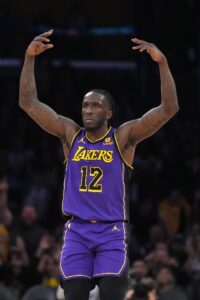
 Instead, the Bucks added talent this summer via the draft and by shopping in the minimum-salary aisle in free agency. Faced with the departures of veterans like
Instead, the Bucks added talent this summer via the draft and by shopping in the minimum-salary aisle in free agency. Faced with the departures of veterans like 
 Of those three goals, the Pelicans clearly achieved one of them, striking a deal with the Hawks to acquire
Of those three goals, the Pelicans clearly achieved one of them, striking a deal with the Hawks to acquire 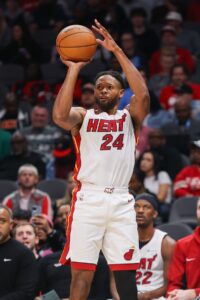
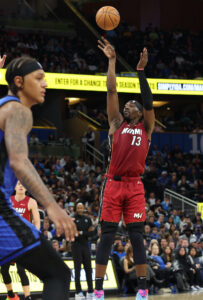 Bryant, meanwhile, was in and out of the Heat’s rotation last season and looked like a player whose days in Miami were numbered. When he declined his minimum-salary player option in order to test the market, it appeared the Heat had lucked out, but perhaps he knew he’d have an offer from his former team waiting for him as a fallback option if he didn’t find a more favorable opportunity elsewhere. I was surprised the Heat re-signed Bryant, but it’s possible they expect to get more from the veteran center now that he has a year with the organization under his belt.
Bryant, meanwhile, was in and out of the Heat’s rotation last season and looked like a player whose days in Miami were numbered. When he declined his minimum-salary player option in order to test the market, it appeared the Heat had lucked out, but perhaps he knew he’d have an offer from his former team waiting for him as a fallback option if he didn’t find a more favorable opportunity elsewhere. I was surprised the Heat re-signed Bryant, but it’s possible they expect to get more from the veteran center now that he has a year with the organization under his belt.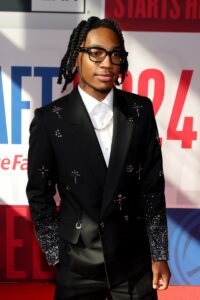 Acquired the draft rights to
Acquired the draft rights to  Dillingham and Shannon won’t provide the sort of veteran savvy that Morris and McLaughlin brought to the table and may not be ready to play regular roles right away, but their youth, athleticism, and scoring ability will give the Wolves some real upside off the bench going forward.
Dillingham and Shannon won’t provide the sort of veteran savvy that Morris and McLaughlin brought to the table and may not be ready to play regular roles right away, but their youth, athleticism, and scoring ability will give the Wolves some real upside off the bench going forward.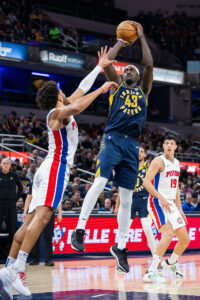
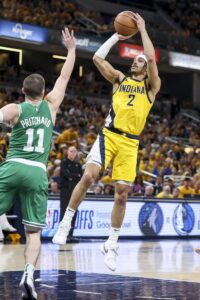 A projected first-round pick who slipped to day two, Furphy is one of just two second-rounders in this year’s class to receive three fully guaranteed years on his first NBA contract, signaling that the Pacers are high on him. Indiana has a good recent track record of finding gems near the end of the first round (
A projected first-round pick who slipped to day two, Furphy is one of just two second-rounders in this year’s class to receive three fully guaranteed years on his first NBA contract, signaling that the Pacers are high on him. Indiana has a good recent track record of finding gems near the end of the first round (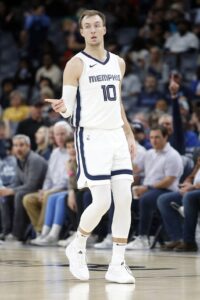
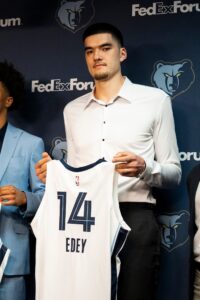 Edey is coming off a monster college career at Purdue, where he was named the NCAA’s player of the year in each of the past two seasons. And he showed some promise when he was able to suit up in Summer League last month, averaging 10.0 points, 9.0 rebounds, and 2.5 blocks in 21.0 minutes per game, though he was limited to just two appearances (one in Salt Lake City and one in Las Vegas) due to ankle issues.
Edey is coming off a monster college career at Purdue, where he was named the NCAA’s player of the year in each of the past two seasons. And he showed some promise when he was able to suit up in Summer League last month, averaging 10.0 points, 9.0 rebounds, and 2.5 blocks in 21.0 minutes per game, though he was limited to just two appearances (one in Salt Lake City and one in Las Vegas) due to ankle issues.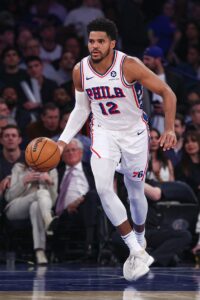
 Harris, Fontecchio, and Beasley aren’t going to turn Detroit into a playoff team, but they’ll help open up the floor for franchise player
Harris, Fontecchio, and Beasley aren’t going to turn Detroit into a playoff team, but they’ll help open up the floor for franchise player 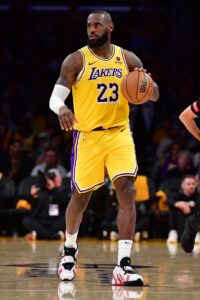
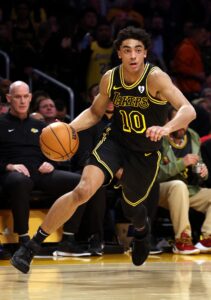 Ultimately, the Lakers appear likely to enter the 2024/25 season with a relatively similar roster to the one that finished the ’23/24 campaign. They’ll bet on internal improvement and will hope to get some contributions from their newly drafted rookies.
Ultimately, the Lakers appear likely to enter the 2024/25 season with a relatively similar roster to the one that finished the ’23/24 campaign. They’ll bet on internal improvement and will hope to get some contributions from their newly drafted rookies.